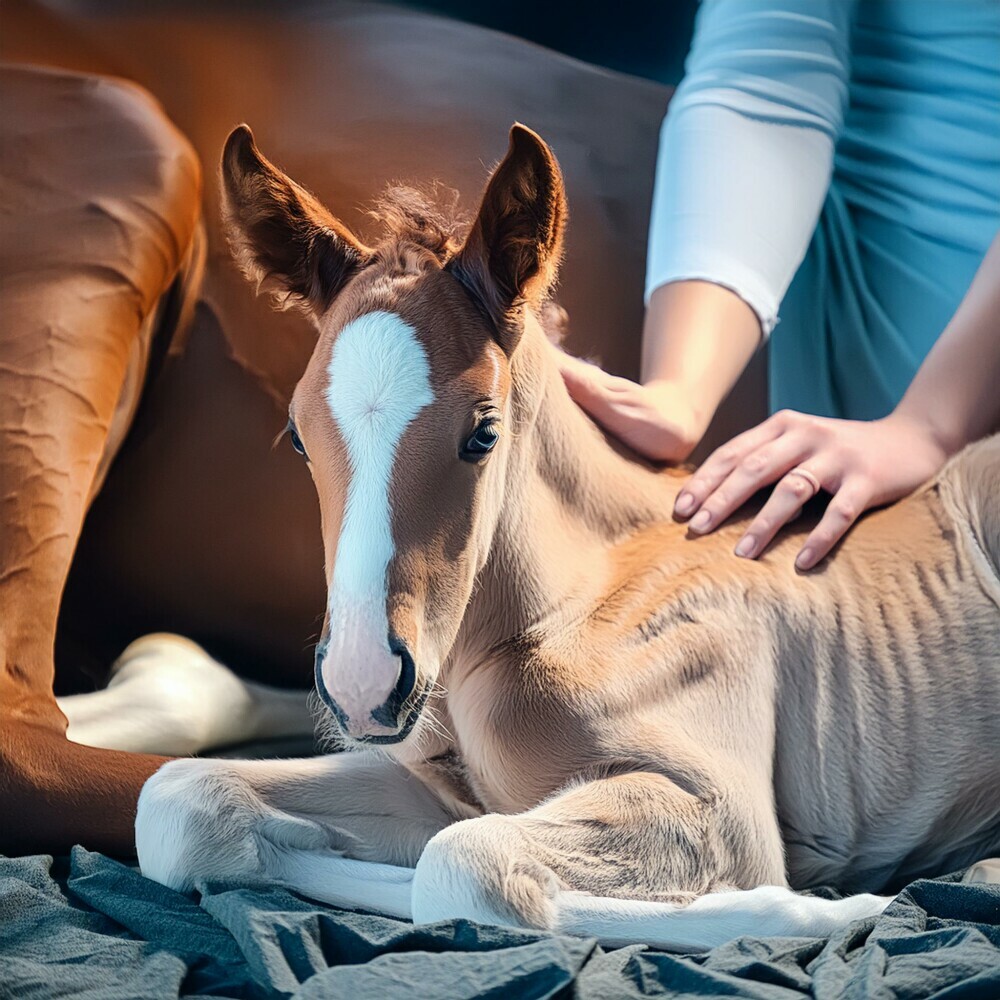Introduction to Foal Training: Starting Right at Birth

As a horse trainer, I’ve found that early foal training lays the foundation for a well-behaved and responsive adult horse. Starting training at birth may seem ambitious, but it is both practical and beneficial. In this guide, I’ll cover essential steps to begin working with your new foal immediately.
Each of these steps will be elaborated on in future articles. This is just to give you a base to start from.
1. Establishing Trust and Bonding

The first few hours and days of a foal’s life are crucial for establishing trust and a strong bond. Handle the foal gently but consistently from the moment it’s born. Spend time in the stall, allowing the foal to get accustomed to your presence. Stroke its neck, back, and legs gently to get it used to human touch. This early interaction helps the foal associate humans with positive experiences.
2. Halter Training

Halter training should begin within the first week. Choose a soft, well-fitting foal halter to prevent discomfort. Start by gently placing the halter on the foal for short periods, allowing it to adjust. Gradually increase the time the halter is worn as the foal becomes more comfortable.
Once the foal is comfortable with the halter, introduce a lead rope. At this stage, the objective is not to lead the foal but to familiarize it with the feel of the rope. Allow the foal to walk around with the rope trailing behind, supervised, to prevent entanglement. After a few days, gently guide the foal with the lead rope, using light pressure and rewarding compliance with gentle strokes and soothing words.
3. Handling and Desensitization

Handling and desensitization are critical aspects of early foal training. Regularly handle the foal’s legs, ears, and mouth to get it used to being touched all over. This will make future veterinary and farrier visits less stressful.
Introduce the foal to various objects and sounds to build its confidence. Use items like grooming brushes, plastic bags, and soft ropes to gently touch different parts of the foal’s body. This process helps the foal learn that new and unusual objects are not to be feared.
4. Leading and Basic Commands

As the foal becomes more comfortable with the halter and lead rope, start teaching basic leading and commands. Use simple, consistent commands like “walk” and “stop.” Gently guide the foal alongside you, rewarding it with soft pats and encouraging words when it responds correctly.
Be patient and avoid harsh corrections. Early training sessions should be short, positive, and end on a good note to keep the foal engaged and willing to learn.
Conclusion
Starting foal training at birth sets the stage for a well-adjusted and responsive horse. By establishing trust, beginning halter training early, practicing desensitization, and teaching basic commands, you lay a solid foundation for future training. Remember, consistency, patience, and positive reinforcement are key. Early training not only makes handling easier but also strengthens the bond between you and your foal, ensuring a successful and rewarding partnership.
Watch for more coming soon.

